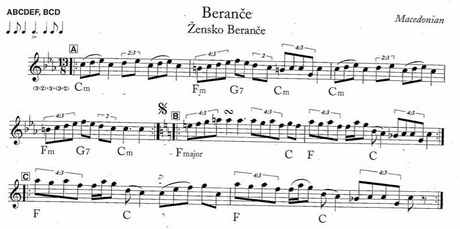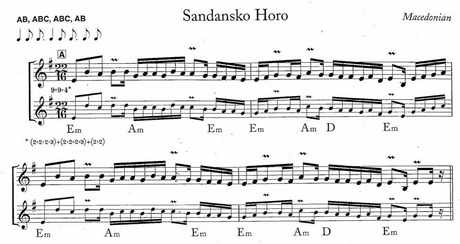Anyone ready for another year of music theory talk? I did my annual shtick this week on odd meters. You can anticipate me: Holst’s “Mars,” the ancient Greek “Hymn to Apollo,” and Brubeck’s Take Five for quintuple meter; Pink Floyd’s “Money” for seven; a long passage from Roy Harris’s Seventh Symphony, plus a Bulgarian “Krivo Horo” for eleven; the “Blues” movement of Ben Johnston’s Suite for microtonal piano for thirteen; Waylon Jennings’s “Amanda” for fifteen; and the end of the first movement of my Desert Sonata for a long passage in 41/16 meter. Only this year, I have a student, Benjamin Bath, who grew up in a Greek family and going to Greek weddings and all that, and every meter I’d start to mention, he’d reel off all the traditional Greek and Macedonian and Bulgarian songs, and already knew the couple I played. So Monday he brought in a book, The Pinewoods International Collection selected by Tom Pixton and published by NightShade, and let me copy some examples. Try humming through this little number:
[T]he Bulgarians DO NOT count out every “8th” or “16th” note while performing their music. They express them as long and short beats. They actively discourage trying to count it out, and expressed that the only way to hope to begin to play it accurately would be to feel the long and short beats.


